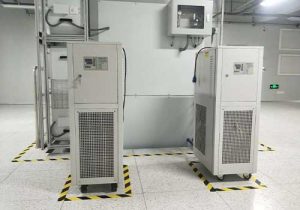chilled water system design
Chilled Water System Design: Principles and Applications
Chilled water systems are an integral part of modern heating, ventilation, and air conditioning (HVAC) systems. They function by circulating chilled water through a network of pipes to provide cooling to various areas in commercial buildings, industrial processes, and data centers. The design of these systems is critical to ensuring efficient operation, energy conservation, and sustainability.

Design Principles of Chilled Water Systems
The design of a chilled water system involves several key components and principles:
Chiller Selection: Chillers can be air-cooled or water-cooled, with each type having its own advantages. Air-cooled chillers are easy to install and maintain but may be less efficient in warmer climates. Water-cooled chillers are more efficient in warmer climates but require a water source and additional infrastructure for the cooling tower.
Chiller Capacity: The capacity of the chiller is a critical factor in system design. It must be sized to meet the peak cooling demand of the application while considering the efficiency of the chiller at different load conditions. Chillers are often selected based on their coefficient of performance (COP), which is a measure of the chiller’s efficiency.
Pump Selection and Configuration: Pumps are used to circulate the chilled water through the system. The selection of pumps involves determining the appropriate head and flow rate to ensure adequate pressure and flow across the system. Pumps can be configured in primary-secondary systems or variable-primary flow (VPF) systems, each with its own advantages and disadvantages.

Cooling Tower Selection: Cooling towers are used in water-cooled systems to reject heat from the condenser water to the atmosphere. The selection of a cooling tower involves considering factors such as the tower’s capacity, efficiency, and the climate conditions in which it will operate.
Pipe Sizing and Insulation: The pipes used in chilled water systems must be sized to handle the flow rate and pressure drop of the system. Insulation is also critical to minimize heat gain or loss in the pipes, ensuring that the chilled water remains at the desired temperature.
Applications of Chilled Water Systems
Chilled water systems are used in a variety of applications where precise temperature control is required:
Commercial Buildings: In commercial buildings, chilled water systems provide cooling for air conditioning systems, ensuring comfortable indoor environments for occupants.
Industrial Processes: In industries such as manufacturing, pharmaceuticals, and food processing, chilled water systems are used to maintain optimal process temperatures, which are critical for product quality and safety.
Data Centers: Data centers require precise temperature control to prevent overheating of sensitive electronic equipment. Chilled water systems provide a reliable and efficient cooling solution for these facilities.
Best Practices for Chilled Water System Design
Best practices for designing chilled water systems include:

System Sizing: It’s important to size the system components, including the chiller, pumps, and cooling tower, to match the actual cooling load rather than over-sizing, which can lead to inefficiencies and higher operating costs.
Energy Efficiency: Designing for energy efficiency involves selecting high-efficiency equipment, optimizing flow rates, and implementing controls that allow for variable speed operation of pumps and chillers.
Sustainability: Sustainable design principles can be incorporated into chilled water systems by using environmentally friendly refrigerants, minimizing water usage, and implementing energy recovery strategies.
Maintenance and Operation: Designing for ease of maintenance and operation is crucial for ensuring the long-term performance and reliability of the system. This includes providing adequate access for maintenance activities and implementing control systems that facilitate monitoring and troubleshooting.
Conclusion
Chilled water system design is a complex process that involves selecting and sizing various components to meet the cooling demands of a facility while maximizing efficiency and sustainability. By following best practices and considering the latest advancements in technology, designers can create chilled water systems that provide reliable cooling, minimize energy consumption, and contribute to a sustainable built environment. As the global market for chillers continues to evolve, there is a growing focus on energy efficiency and environmental sustainability, driving innovation in the design and operation of chilled water systems.
Related recommendations
industrial heating manufacturers
450What Are Industrial Heating Manufacturers?Industrial heating manufacturers are companies that design, produce, and supply heating equipment for industrial applications. These manufacturers develop...
View detailscoolant coolers chillers
443Coolant Coolers Chillers: In-Depth Analysis Definition of Coolant Coolers Chillers:Coolant chillers are equipment used to lower the temperature of a liquid or gas in industrial applications. Th...
View detailsThe Difference between Open Chiller and Water-cooled Box Chiller
1744The Difference between Open Chiller and Water-cooled Box Chiller Everyone knows that chillers can be classified in various and complicated ways. It is mainly divided into two types: air-coole...
View detailssmall water cooled chiller
377Introduction to Small Water - Cooled ChillersSmall water - cooled chillers are specialized cooling devices designed to meet the cooling needs of various small - scale applications. Ranging from c...
View details
 LNEYA Chiller
LNEYA Chiller






HelloPlease log in